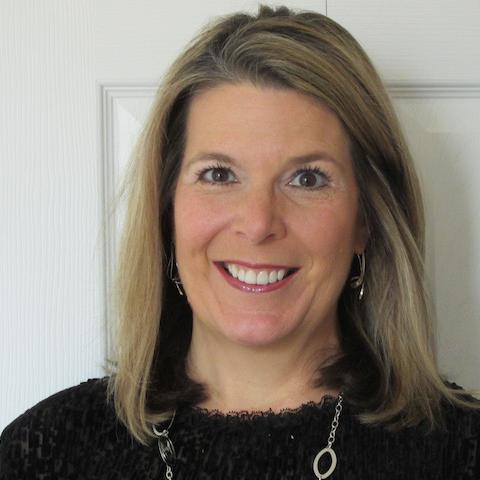Having recently visited this village (now encroached by suburban sprawl), I also revisited my notion of community, in general, and its intersections with my membership in an array of music and education communities, including one of my primary professional music communities since 1998—ISME. How is “community” defined? How might empathetic leadership and engagement provide foundations for creating and nurturing “community” among teacher-facilitators and learners within music classrooms and performance spaces?
Defining community
The word “community” is derived from the Latin word “communitas,” meaning fellowship, holding something in common, or experiencing something shared (“co”=with; “munia”=duties or functions). A community might be a physical space, but it might also exist as a group having shared history, ideology, interest, or goal. We may be born into communities, but, by and large, we choose our communities in fulfillment of our human need to “belong.” Tracy (2009) describes five definitions of “community”, which interact with and can contradict each other as they exist beyond the ideal:
- People who inhabit a certain geographic space (e.g., larger than family, but smaller than a state or nation);
- People who belong to a cultural identity group (i.e., African American, LGBTQ, Pennsylvania Dutch);
- People who share an interest or activity (i.e., folk musicians, vegetarian, distance runners);
- People who enact a sense of positive belonging (i.e., create a safe space, work toward group dynamic and benefit; nurture sense of belonging; fulfillment of human need); and,
- People who are committed to the group “good” while also valueing and promoting individual rights within the group.
“Community emphasises support for collaborative activity and for creating knowledge that is connected to people’s values, history, and lived experiences” (Bruce & Bloch, 2013). John Dewey viewed the worth of education as its relevance to people’s lived experience. At the heart of his philosophy (Dewey, 1916), education was to be grounded in society for the purpose of nurturing people’s capacities to make meaning of and articulate their lived experiences within their communities. This “connected knowing” calls on students to become active engagers and explorers in community with others, co-constructing meaning of their material worlds. Consequently, students enter into communities—learning partnerships—in which power and responsibility are shared by students and teachers.
Wenger, McDermott, & Snyder (2002) defined “communities of practice as groups of people who share a concern, a set of problems, or a passion about a topic, and who deepen their knowledge and expertise in this area by interacting on an ongoing basis” (p. 25). What I find compelling about this definition is the explicit call for relationship-building (community-building) in the process of deepening one’s own knowledge bases or skill sets. This hearkens back to Vygotsky’s learning as a socially constructed endeavour. As a result of working individually and collaboratively, the group’s collective understanding and individual’s personal understanding evolves. Communities that thrive enjoy pursuing a “passion point” of interest, learn to communicate their understandings and concerns about an issue, and come to value individuals’ unique perspectives and contributions.
Applying these notions of education and community, let us consider possible strategies for developing “community” among learners in our music classrooms and performance spaces. What habits of mind and behaviour are embraced by teacher-facilitators and learners in order to create and nurture music communities?
Empathetic engagement
I believe that empathetic engagement is a mindset at the core of building music learning communities. In an ideal world, all teacher-facilitators would be empathetic leaders who are caring, compassionate, charismatic, creative, curious, open-minded, humble, and musically competent. They would also implement pedagogical strategies that help students meet their psychological, educational, musical, and social needs. Similarly in that ideal world, all students would be empathetic learners, coming to the teaching–learning partnership with open and curious minds, willing to try new educational experiences, enthusiastically engaging with their musical learning environments, and caring for and showing compassion toward their peers and teacher-facilitators (Kerchner, 2014).
Empathetic leaders work with principles for cultivating communities of practice, including those identified by Wenger, McDermott & Snyder (2002). Here is a sample of those core values, reworked and applied to music teaching and learning partnerships (Kerchner, 2003, 121):
- Each person contributes to the music class or rehearsal dynamic.
- Each person has the right to an “equal voice” in class or rehearsal, in expressing questions, opinions, observations, or suggestions.
- Each person is capable of choosing, interpreting, imagining, deciding, evaluating, focusing, and performing in ways that contribute to the class’s co-created understanding of musical experiences.
- Both teachers and students are learners and leaders.
- Music learning communities that are based on respect and empathy forge deeply rooted connections between people and the music.
Empathetic leaders are responsible for modeling respectful, caring, and compassionate words and behaviors in music classrooms or rehearsals. Through these modeled behaviors, they demonstrate their expectations for student-teacher and student-student interactions in the music classroom and rehearsal spaces (Kerchner, 2014). In the next section, we will examine a few specific behaviors, aligned with the aforementioned core values, that demonstrate empathetic leadership and learning within music communities.
Listening for learning
Respectful listening includes hearing, considering, reflecting, and responding—and appropriately taking action or deciding to take no action. Empathetic leaders question and listen with the intent to discover and understand their student informants. Teachers and students enter the art of engaged listening by being attentive, sincere, and open to others’ words, thoughts, and opinions that might be aligned with or contrary to those they hold. Empathetic leaders are listeners who are as willing to be convinced by others as they are to convince others. Effective listening is accompanied by facial expressions, eye contact, and even short verbal phrases that acknowledge what the speaker has to say. These listener behaviours indicate to the speaker that they are being listened to intently.
Questioning for understanding
Empathetic leaders ask students questions, which, in turn, sends the message that they value their students’ opinions, comments, responses, and questions. It is saying, “You have something to offer,” and “I have something to learn from you.” Open-ended, divergent questions elicit more descriptive responses than questions that students can respond to simply by saying yes or no. Such open-ended questions include:
“Why?”
“What did you notice?”
“How did it feel when you played/sang that?”
“How would you describe the piece?”
“What in the music made you think of…?”
“What is the difference between…?”
“Why do you suppose…?”
“How does this compare with…?”
Providing feedback
Teachers’ comments can be encouraging, nurturing, and constructive (feedback that feeds) or they can be degrading, demeaning, and destructive (feedback that starves). Empathetic leaders provide feedback that is honest, direct, sincere, and encouraging, while also providing clear paths for their continued improvement and greater sophistication of thought and musical behaviour. Observational feedback literally conveys objective descriptions of what the teacher-facilitator has noticed about the students’ responses or task performances. It is specific, and, when accompanied by specific means for improvement, it can be a powerful educational tool.
For example:
“Hmmm. I’m not sure about that description of the music. Let’s listen again and see if we can add more specific words this time.”
“Clarinets, you are closer to beginning the phrase together. This time, listen for each other’s initial breath. Listen so you can breathe together before you play your first note.”
“Almost! You were closer to shaping the melody to fit this section of music.”
These simple shifts in thinking, speaking, and behaving can have significant impacts on the dynamic of a music community. It may mean the difference between learners feeling whether or not they belong, have a “voice” and contributing role within the group, and choose to invest in the community’s efforts. A community can provide its membership with familiarity, belonging, safety, and affirmation—personal and musical “homes.” With that membership also comes each person’s responsibility to be empathetic, supportive, engaged participants in tasks and functions that allow community to develop. Empathetic teachers clearly express the benefits and responsibilities of engaging with others in musical communities in ways that inspire and make sense to learners, regardless of their age.
ISME as “community”
This brings me back to ISME as a professional music community. Its mission speaks to a core value, a belief, an “interest” that draws its membership into being: “lived experiences of music…are a vital part of the life of all people”. The ISME mission seeks to enhance these experiences by “building and maintaining a worldwide community of music educators characterised by mutual respect and support.” This statement reflects the intent of the ISME membership to pursue empathetic interactions in its pursuit to support musicking in communities, globally, regionally, in its diverse Commissions and SIGS, and in our own local communities. Since we are in community with one another, how might each of us become an empathetic, supportive, and engaged participant—with our own unique abilities, interests, and lived musical experiences—in our ISME organisation? Where, within our community, have you/will you find and nurture your professional musical home?
References
Bruce, B. & Bloch, N. (2013). Pragmatism and community inquiry: A case study of community-based learning. Education and Culture, 29(1), 27-45.
Dewey, J. (1916). Democracy and education: An introduction to the philosophy of education. New York: Macmillan.
Kerchner, J. (2003). Stepping off of the podium: Leveling the playing (and singing) field. In S. Leong, Ed., Musicianship In the 21st Century: Issues, Trends, & Possibilities (113-129). Sydney: Australian Music Centre
Kerchner, J. (2014). Music across the senses: Listening, learning, making meaning. NY: Oxford University Press.
Tracy, K. (2009). Community. In S. Littlejohn & K. Foss (Eds), Encyclopedia of Communication Theory (144-147). Thousand Oaks, CA: Sage Publications.
Wenger, E., McDermott, R., & Snyder, W. (2002). Cultivating communities of practice: A guide to managing knowledge. Boston, MA: Harvard Business Review Press.












